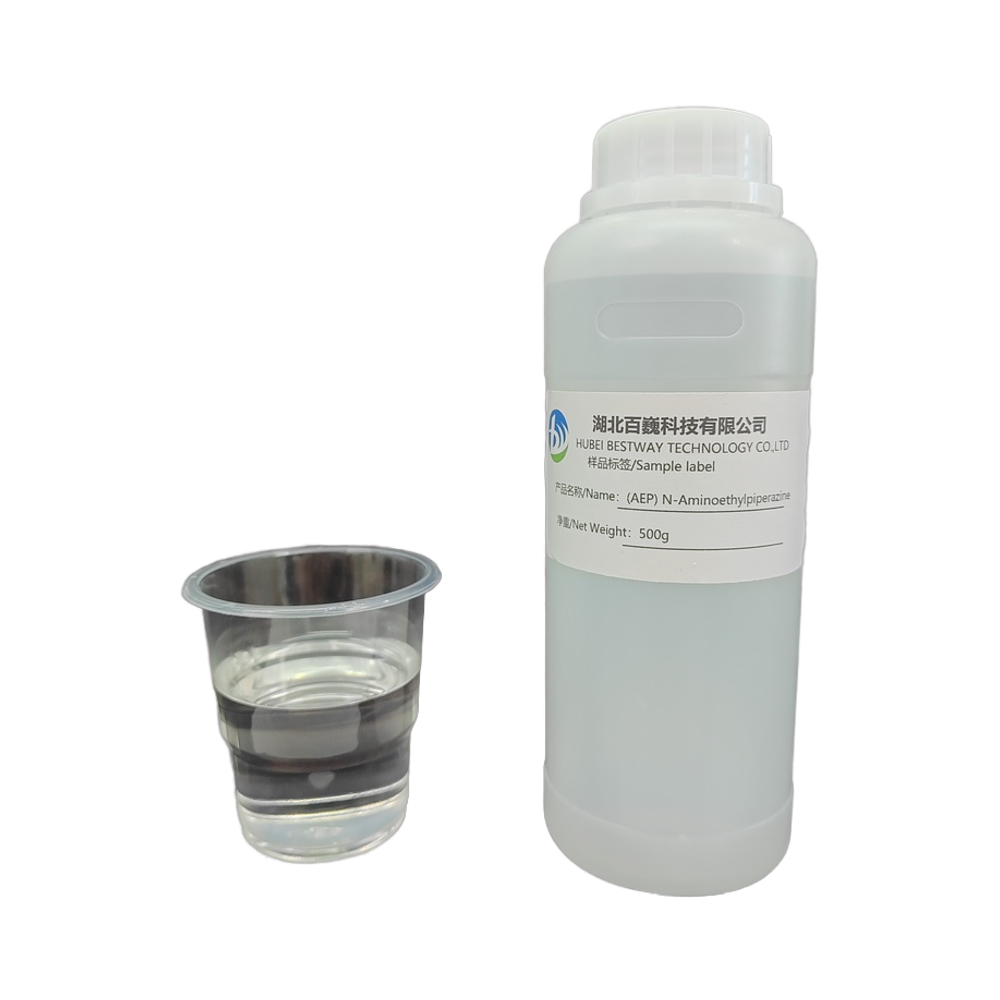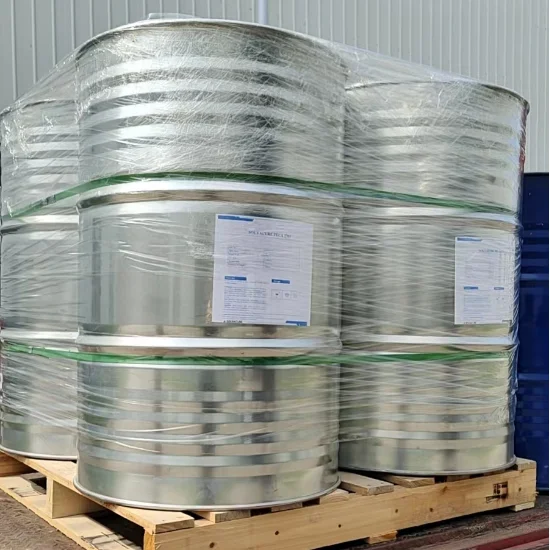- Overview
- Related Products
Product Description
1-piperazineethaneamine
Aminoethylpiperazine-HP is a cyclic ethyleneamine. It contains one primary, one secondary, and one tertiary
amine. AEP is a single-component product that is clear and colorless and has an ammonia-like odor
Aminoethylpiperazine-HP is a cyclic ethyleneamine. It contains one primary, one secondary, and one tertiary
amine. AEP is a single-component product that is clear and colorless and has an ammonia-like odor
Application
• Asphalt additives
• Mineral processing aids
• Corrosion inhibitors
• Epoxy curing agents
• Polyamide resins
• Urethane chemicals
• Corrosion inhibitors
• Epoxy curing agents
• Polyamide resins
• Urethane chemicals
Storage and packaging
In order to maintain the high degree of purity with which aminoethylpiperazine-HP is manufactured and shipped,
the following storage and handling considerations are recommended:
Dry Inert Gas Blanket
This product should be stored under a dry inert gas blanket, such as nitrogen, to minimize contamination resulting
from contact with air and water.
the following storage and handling considerations are recommended:
Dry Inert Gas Blanket
This product should be stored under a dry inert gas blanket, such as nitrogen, to minimize contamination resulting
from contact with air and water.
Materials of Construction
If slight coloration of the ethyleneamine is acceptable, storage tanks may be made of carbon steel or black iron, provided they are free of rust and mill scale. However, if the amine is stored in such tanks, color may develop due
to iron contamination. If iron contamination cannot be tolerated, tanks constructed of types 304 or 316 stainless
steel should be used. (Note: Because they are quickly corroded by amines, do not use copper, copper alloys, brass, or bronze in tanks or lines.)
Storage Temperature
Aminoethylpiperazine-HP has a freezing point of -17°C. To avoid freezing, the product should be maintained
above this temperature. Spills or Leaks
Small spills should be covered with inorganic absorbents and disposed of properly. Organic absorbents have been
known to ignite when contaminated with amines in closed containers. Certain cellulosic materials used for spill
cleanup such as wood chips or sawdust have shown reactivity with ethyleneamines and should be avoided. Large
spills should be contained and recovered. Water may be used for clean-up purposes, but avoid disposing of the
material into sewers or natural water bodies. Disposal should be in accordance with all federal, state and local
laws, regulations, and ordinances. Ethyleneamine leaks will frequently be identified by the odor (ammoniacal) or by
the formation of a white, solid, waxy substance (amine carbamates). Inorganic absorbents or water may be used to
clean up the amine waste.
If slight coloration of the ethyleneamine is acceptable, storage tanks may be made of carbon steel or black iron, provided they are free of rust and mill scale. However, if the amine is stored in such tanks, color may develop due
to iron contamination. If iron contamination cannot be tolerated, tanks constructed of types 304 or 316 stainless
steel should be used. (Note: Because they are quickly corroded by amines, do not use copper, copper alloys, brass, or bronze in tanks or lines.)
Storage Temperature
Aminoethylpiperazine-HP has a freezing point of -17°C. To avoid freezing, the product should be maintained
above this temperature. Spills or Leaks
Small spills should be covered with inorganic absorbents and disposed of properly. Organic absorbents have been
known to ignite when contaminated with amines in closed containers. Certain cellulosic materials used for spill
cleanup such as wood chips or sawdust have shown reactivity with ethyleneamines and should be avoided. Large
spills should be contained and recovered. Water may be used for clean-up purposes, but avoid disposing of the
material into sewers or natural water bodies. Disposal should be in accordance with all federal, state and local
laws, regulations, and ordinances. Ethyleneamine leaks will frequently be identified by the odor (ammoniacal) or by
the formation of a white, solid, waxy substance (amine carbamates). Inorganic absorbents or water may be used to
clean up the amine waste.
Package:
Aminoethylpiperazine-HP is available in bulk and in 200 Kg net weight
Aminoethylpiperazine-HP is available in bulk and in 200 Kg net weight








